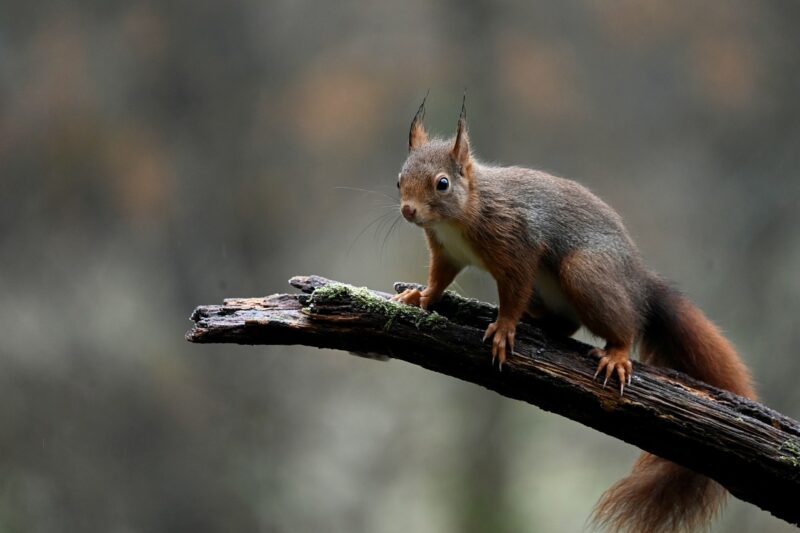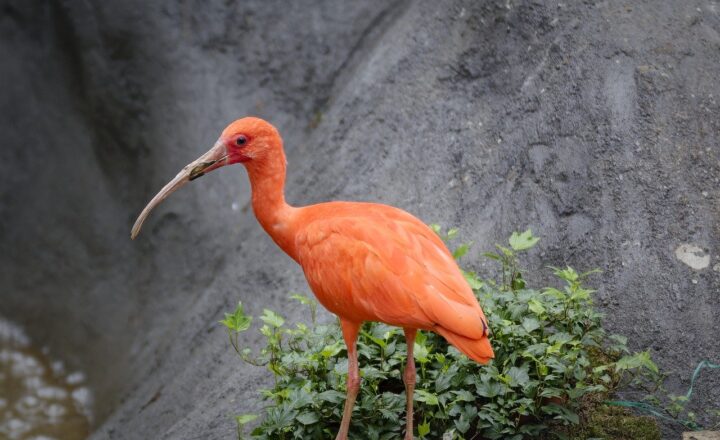How Squirrels Prepare for Winter: A Deep Dive into the Resourceful Lives of These Cute Rodents
November 13, 2024

As the air turns crisp and autumn leaves blanket the ground, the landscape transforms into a rich tapestry of colors. Amongst this beautiful scenery, a furry creature flits about, its bushy tail twitching with purpose. Squirrels, those cute and often mischievous little rodents, are busy gathering supplies as they prepare for the oncoming winter. But what exactly do these resourceful critters do to ensure their survival during the cold, harsh months? Let’s dive deep into the fascinating lives of squirrels and discover how they prepare for winter.
1. The Squirrel’s Seasonal Strategy
To understand how squirrels prepare for winter, we must first delve into their seasonal behavior. Squirrels are highly adaptive creatures, and their survival strategies hinge on a few key factors:
– Hoarding Food: Squirrels are notorious for their practice of hoarding food. As the days grow shorter and cooler, they embark on an intense foraging spree, collecting acorns, nuts, and seeds. They have an amazing memory that helps them remember where they buried their food so they can find it later.
– Building Nests: Squirrels build complex nests, known as dreys, in trees. These nests provide warmth and security as temperatures drop. They often line the interiors of their nests with leaves, twigs, and fur to insulate against the cold.
– Behavioral Adaptations: As temperatures plummet, squirrels become less active. Instead of foraging relentlessly, they may stay in their nests for extended periods to conserve energy.
Thanks to these strategies, squirrels can survive even the harshest winters.
2. The Importance of Nut Gathering
One of the most critical tasks squirrels undertake in preparation for winter is nut gathering. Here’s how it works:
– Collecting Nuts: Squirrels are especially fond of acorns, hazelnuts, walnuts, and pecans. They are known to collect and bury thousands of nuts in various locations.
– Storing Food: Squirrels often employ different techniques when storing their finds. Some will bury nuts deeply in the ground, while others will place them in tree crevices, utilizing their keen sense of smell to locate these caches later.
– Selective Hoarding: Interestingly, squirrels have a selective approach to hoarding; they tend to focus on the nuts that are high in fat content, as these will provide the necessary energy for their winter survival.
Research indicates that squirrels may even be able to distinguish between nuts that are still viable and those that have already begun to sprout—a testament to their incredible survival instincts.
3. Building Insulated Nests: The Drey
A crucial part of a squirrel’s winter preparation is the construction of their nests, also known as dreys. The properties of these nests include:
– Location: Dreys are typically built high up in trees, providing shelter from predators and inclement weather. The height also allows squirrels to leap between trees easily while foraging.
– Structure: Dreys are built using twigs, leaves, and moss, woven together into a round shape. This structure allows for excellent insulation.
– Interior Lining: Squirrels line their nests with softer materials like fur, feathers, and even human-made fibers. This lining enhances comfort and warmth, creating a snug sanctuary against the biting cold.
In the depths of winter, squirrels will return to these nests not just for rest, but to maintain their body heat.
4. Adjusting Diet and Behavior
As temperatures dip, squirrels adapt their diets and behaviors to cope:
– Diet Shift: In late autumn, squirrels shift their diet from fruit and seeds to more energy-dense options like nuts. This dietary change is crucial for building fat reserves that provide necessary energy during the long winter months.
– Reduced Activity: When snowfall covers the ground, food becomes scarcer, and temperatures drop. Squirrels may slow down their foraging activities, spending more time in their nests. This reduction in activity helps conserve energy and body heat, a vital adaptation for winter survival.
– Social Behaviors: Interestingly, while squirrels are generally seen as solitary creatures, they may engage in social behaviors during winter, such as sharing warmth in shared nests or foraging together in groups when food is especially scarce.
5. The Squirrel’s Survival Instincts
Squirrels are equipped with an array of survival instincts that help them thrive in winter:
– Sense of Smell: A squirrel’s sense of smell is highly developed, enabling them to locate buried food even under deep snow.
– Adaptive Behavior: Depending on environmental conditions, some squirrels will adjust their hoarding strategies, whether that means digging deeper to reach the ground or hiding food in less accessible areas.
– Food Competition: Squirrels face competitive pressure from other wildlife during winter, including birds and other mammals. This competition pushes them to hone their foraging skills and adapt to different feeding strategies to ensure their survival.
6. The Impact of Climate Change on Squirrel Behavior
As we look at the remarkable adaptations of squirrels, it’s essential to highlight the impact of climate change on their behaviors during winter:
– Changing Weather Patterns: Warmer winters may disrupt the natural cues squirrels rely on for food gathering and nesting behavior. Milder temperatures could result in earlier food availability, leading to mismatched timing.
– Food Scarcity: Changing climates can affect the availability of nuts and seeds, making their traditional sources of food less predictable. This food scarcity can lead to increased competition among squirrels and other wildlife.
– Altered Migration Patterns: While squirrels are non-migratory, changes in their habitats due to climate conditions may force them to adapt by finding new territories with better resource availability.
These changes highlight the resilience of squirrels, yet they also raise concerns about their long-term survival as their environments become increasingly unpredictable.
Conclusion
The preparation for winter is a critical part of a squirrel’s life cycle, showcasing their remarkable adaptability and resourcefulness. Through strategic food hoarding, constructing insulated nests, and adjusting behavior and diets, these cute rodents exemplify survival in the wild.
As we observe these furry creatures scurrying about in the crisp autumn air, we are reminded of the delicate balance of ecosystems and the importance of preserving natural habitats. Let us appreciate these resourceful creatures and support efforts to understand and protect them in the face of a changing climate. The enduring lessons of nature remind us that preparation and resilience are key to overcoming challenges, even in the animal kingdom.







